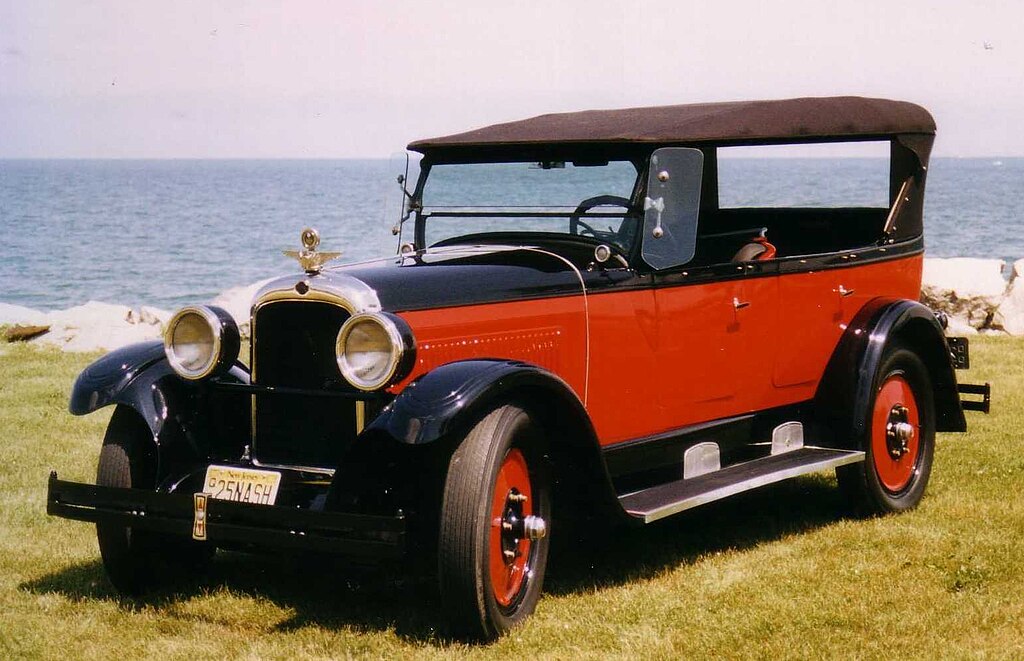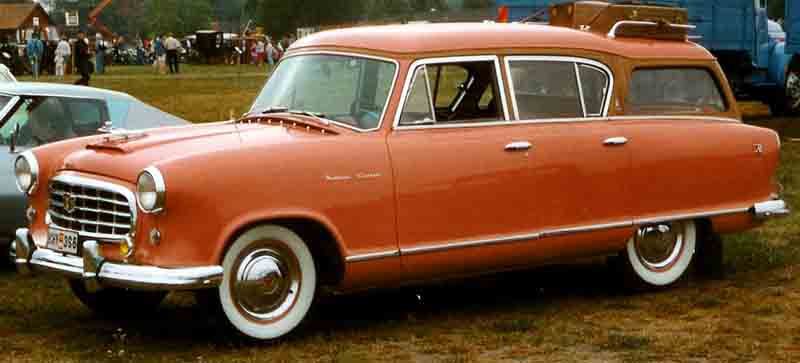
The story of Nash Motors begins way back in the early 1900s, with the Thomas B. Jeffery Company of Kenosha, Wisconsin. Prior to the first TBJC automobiles being produced in 1902, the company spent ample time developing its prototypes. The son of the company namesake came up with two radical innovations during the prototyping process, a steering wheel and front-mounted engines. While normal today, at the time vehicles utilized tiller steering and nearly all had the engine under the seat. Of course by the time TBJC production began, father talked son out of his crazy ideas. Steering wheel or not, the lengthy research and development proved successful; they sold cars as fast as they could build them.
The company filled more than 1,300 orders in 1903, in large part thanks to the adoption of an assembly line production method. Only Olds had utilized this style of manufacturing in the auto industry prior. Production numbers doubled by 1905, with some historians pointing to the switch to a steering wheel instead of a tiller in 1904 as the reason for sturdy sales. Numbers and profits grew steadily throughout the first 15 years of the company’s history, and former General Motors president Charles Nash took notice.

Charles Nash leaves General Motors
A power struggle between Nash and GM founder Billy Durant erupted around 1915. A desire for complete control saw Nash turn down a million dollar salary offer. He walked out the door and went on to found Nash Motors Company on this day in 1916. The following August Nash acquired the Thomas B. Jeffery Company and set up shop in Kenosha. The first car to bear the Nash name rolled out of the factory the following year, known as the 1917 Nash Model 671. Capitalizing on the existing success of the Jeffery Quad, a four wheel steering heavy duty truck, Nash would become the leading manufacturer of four wheel drive vehicles by the end of WWI.
Following the armistice of the Great War, Nash turned his attention to building quality passenger cars. Several innovative features can be found on early Nash cars, such as flow through ventilation still used today. By the end of the 1920s focus was placed on building vehicles that would “Give the customer more than he has paid for,” as advertisements stated.

Before retiring, Charles Nash had to choose his own successor. He landed on George W. Mason, head of the Kelvinator Corporation, which manufactured high end refrigerators. Mason accepted on the condition that Nash would acquire Kelvinator. They struck a deal and Nash-Kelvinator incorporated on January 4, 1937. At the time, the merger was the largest ever of two companies that were not in the same sector.

The Nash Merger Years
The company remained successful up through World War II. A merger with Hudson to form American Motors Corporation occurred in early 1954. Later that year Mason began talks to form a parts sharing arrangement with Packard. In July of that year Studebaker acquired Packard and chatter of a potential AMC-Packard merger began. Those talks were cut short when Mason died that October.
By mid-1957, financial difficulties forced the end of both Nash and Hudson badged production. AMC survived manufacturing only the Metropolitan and Rambler as their own marques. AMC would became the brand name in 1965. The company acquired its biggest asset, Jeep, in 1970. AMC remained relatively fruitful, largely thanks to its 4×4 production, until 1987 when Chrysler Corporation acquired it. The final AMC badged car left the assembly line in 1988, thus ending the direct lineage of Nash vehicles.






















